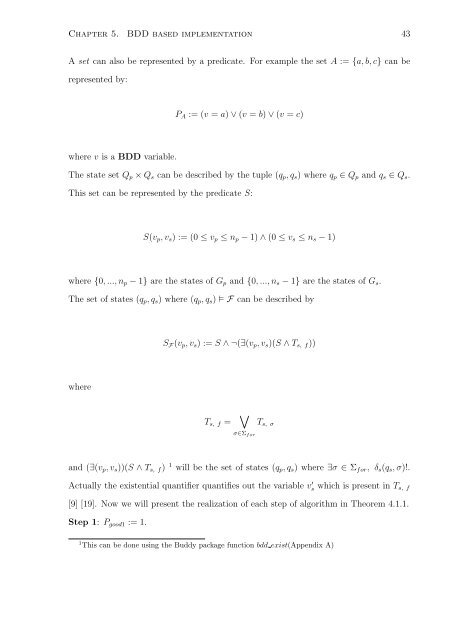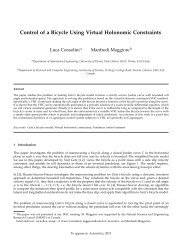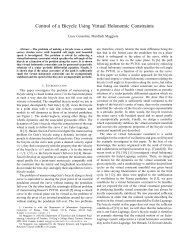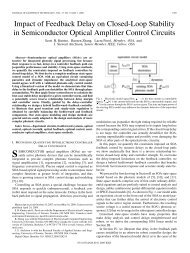State Based Control of Timed Discrete Event Systems using Binary ...
State Based Control of Timed Discrete Event Systems using Binary ...
State Based Control of Timed Discrete Event Systems using Binary ...
Create successful ePaper yourself
Turn your PDF publications into a flip-book with our unique Google optimized e-Paper software.
Chapter 5. BDD based implementation 43A set can also be represented by a predicate. For example the set A := {a, b, c} can berepresented by:P A := (v = a) ∨ (v = b) ∨ (v = c)where v is a BDD variable.The state set Q p × Q s can be described by the tuple (q p , q s ) where q p ∈ Q p and q s ∈ Q s .This set can be represented by the predicate S:S(v p , v s ) := (0 ≤ v p ≤ n p − 1) ∧ (0 ≤ v s ≤ n s − 1)where {0, ..., n p − 1} are the states <strong>of</strong> G p and {0, ..., n s − 1} are the states <strong>of</strong> G s .The set <strong>of</strong> states (q p , q s ) where (q p , q s ) F can be described byS F (v p , v s ) := S ∧ ¬(∃(v p , v s )(S ∧ T s, f ))whereT s, f =∨σ∈Σ forT s, σand (∃(v p , v s ))(S ∧ T s, f ) 1 will be the set <strong>of</strong> states (q p , q s ) where ∃σ ∈ Σ for , δ s (q s , σ)!.Actually the existential quantifier quantifies out the variable v s ′ which is present in T s, f[9] [19]. Now we will present the realization <strong>of</strong> each step <strong>of</strong> algorithm in Theorem 4.1.1.Step 1: P good1 := 1.1 This can be done <strong>using</strong> the Buddy package function bdd exist(Appendix A)







